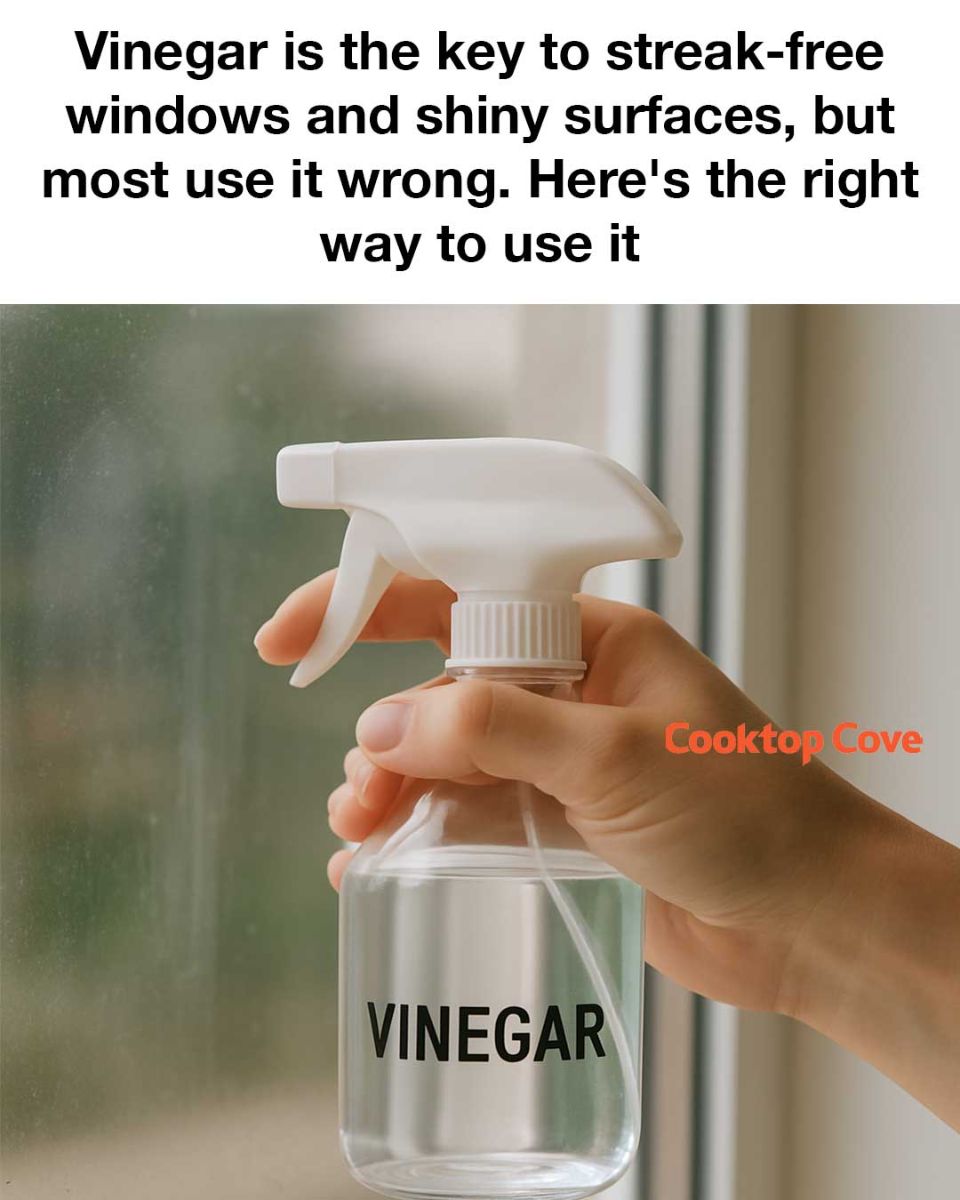6. Step-by-Step Guide to Cleaning Windows with Vinegar
1. Begin by dusting the window surface with a dry microfiber cloth to remove loose dirt and debris.
2. Spray the vinegar and water solution onto the window, covering the entire surface evenly.
3. Use a clean microfiber cloth to wipe the window in a circular motion, loosening any dirt and grime.
4. For a streak-free finish, use a squeegee to remove the solution from the window, starting at the top and working your way down. Wipe the squeegee blade with a cloth after each pass.
5. Finish by wiping the edges of the window with a clean, dry microfiber cloth to remove any remaining moisture.
7. How to Use Vinegar for Shiny Surfaces Beyond Windows
Vinegar can be used to clean and shine a variety of surfaces beyond windows, including stainless steel appliances, glass tabletops, and bathroom fixtures. For stainless steel, spray the vinegar solution onto the surface and wipe with a microfiber cloth, following the grain of the steel to avoid streaks.
For glass tabletops, use the same vinegar solution and a microfiber cloth to wipe the surface, ensuring a streak-free shine. In the bathroom, vinegar can be used to clean and shine faucets and showerheads. Simply spray the solution, let it sit for a few minutes to dissolve mineral deposits, and wipe clean with a cloth.
8. Popular Viral Hacks: What Works and What Doesn’t
There are numerous viral cleaning hacks involving vinegar, but not all are effective or safe. One popular hack is using vinegar to clean microwave ovens by heating a bowl of vinegar and water inside. This works well, as the steam helps loosen food splatters, making them easier to wipe away.
However, some hacks, like using vinegar to clean hardwood floors, can be damaging. The acidity of vinegar can strip the finish from wood floors, leading to dullness and potential damage. Always research and test hacks on a small area before applying them widely.
9. Safety Tips When Using Vinegar as a Cleaner
While vinegar is generally safe to use, there are a few precautions to keep in mind. Avoid mixing vinegar with bleach or hydrogen peroxide, as this can create harmful gases. Always use vinegar in a well-ventilated area to avoid inhaling fumes.
When cleaning with vinegar, wear gloves to protect your skin, especially if you have sensitive skin or cuts. If vinegar comes into contact with your eyes, rinse thoroughly with water. Store vinegar out of reach of children and pets to prevent accidental ingestion.
10. Eco-Friendly Benefits of Cleaning with Vinegar
Vinegar is an eco-friendly cleaning option, as it is biodegradable and non-toxic. Unlike many commercial cleaners, vinegar does not release harmful chemicals into the environment, making it a safer choice for both your home and the planet.
Using vinegar reduces the need for multiple cleaning products, minimizing packaging waste and chemical exposure. By choosing vinegar as a cleaner, you contribute to a more sustainable and environmentally friendly lifestyle.
11. Frequently Asked Questions About Vinegar Cleaning
Q: Can vinegar remove mold and mildew?
A: Yes, vinegar can help remove mold and mildew due to its acidic nature. Spray undiluted vinegar onto the affected area, let it sit for an hour, and scrub with a brush.
Q: Is vinegar safe for all surfaces?
A: No, vinegar should not be used on natural stone, waxed surfaces, or electronic screens, as it can cause damage.
Q: How often should I clean windows with vinegar?
A: For best results, clean windows with vinegar every few months or as needed to maintain clarity and shine.

